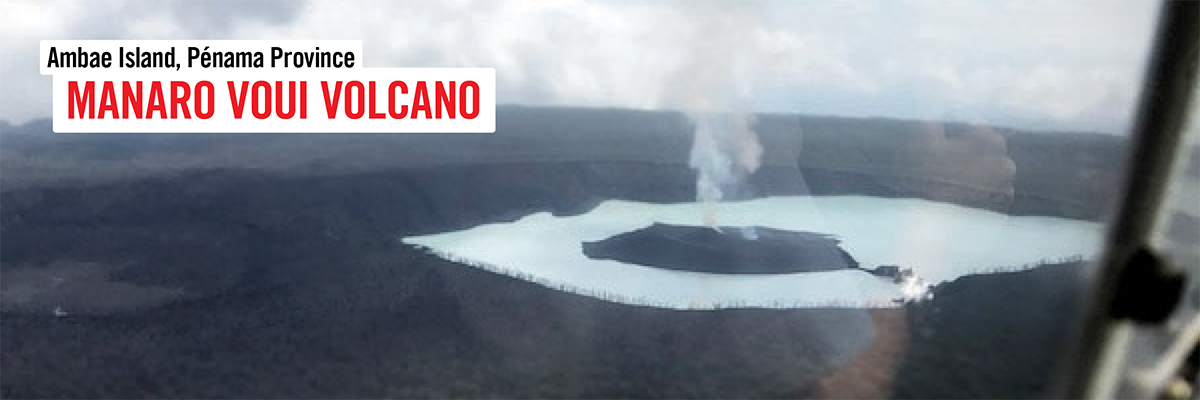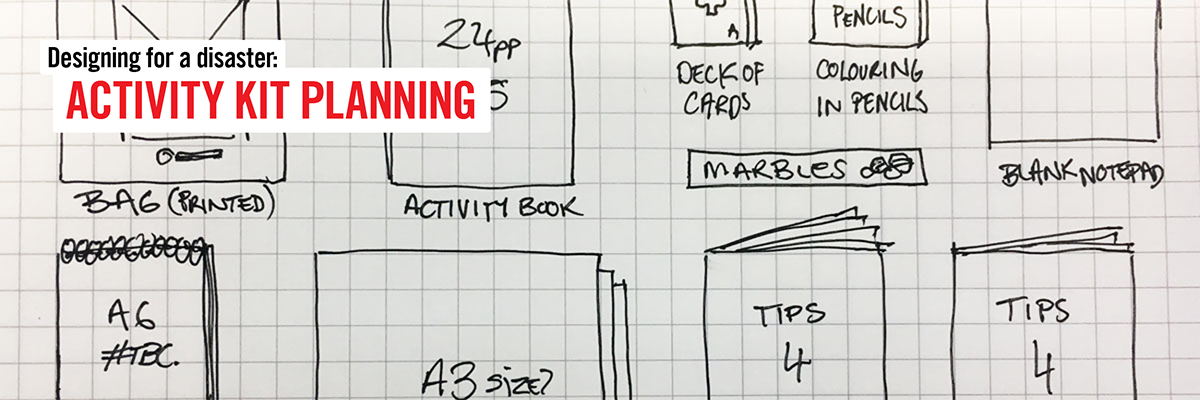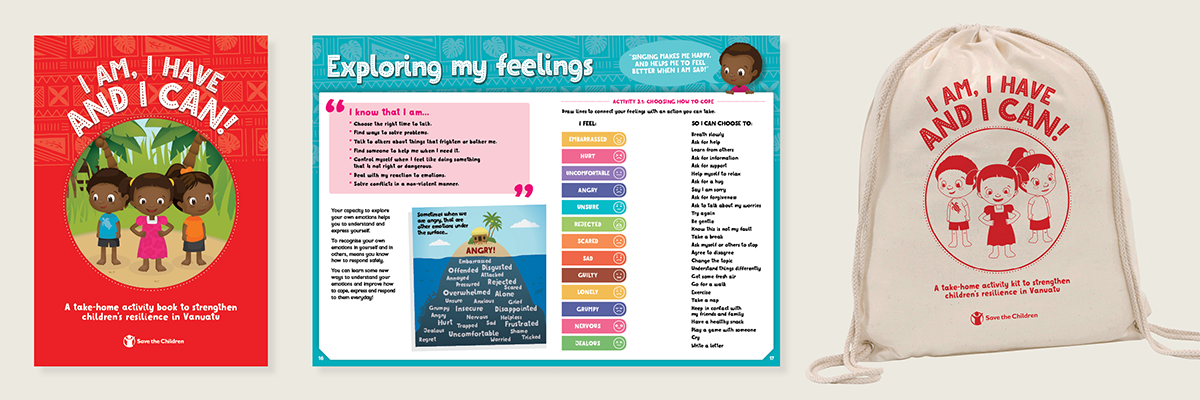How can a graphic designer help children during an emergency?
This was the question that was weighing heavily on my mind as my plane landed on the coconut palm fringed runway of Port Vila, Vanuatu, in May this year.
I’ve worked as a graphic designer for Save the Children Australia for almost two years now. Day-to-day, my job sees me working from our office in Melbourne; illustrating, laying out documents, animating graphics and designing resources for our programs. If anyone asks, I usually like to joke that I get to colour things in for a living – it’s an awesome job and one I feel lucky to have.

My design brief
I was in Vanuatu because the Manaro Voui volcano on Ambae Island had roared into life for the second time in less than a year.
The volcano sits at the heart of the island and is an unpredictable powder keg. It’s a constant threat to the communities living around it. In September 2017, it smothered the island in a thick ash, killing crops and polluting the air and water – and led to the mass evacuation of Ambae’s 11,000 residents to the nearby islands of Pentacost, Maewo and Santo.
Back then, Save the Children set up Child Friendly Spaces in evacuation centres to help displaced children and their families find a sense of normalcy after the traumatic upheaval. The spaces provided more than just a safe environment for children to play and learn; they were also a central point where important information could be shared, child protection issues could be identified and communities could be educated on water, sanitation and health in times of emergency. Once the volcanic activity subsided, people returned to their communities, began the arduous clean-up task and resumed their lives.
But then, earlier this year, Manaro Voui roared again
Once more the volcanic activity forced people from their homes, first in the western communities of Ambae, and then again in the north. These communities in the west and north of the island were displaced to the south and sheltered in evacuation centres and community homestays — unsure of if they would ever return home again.
I had been sent from Australia to Vanuatu to help the team produce printed resources for this new relocation – storybooks that had themes of resilience to help children through the uncertainty and change. Without adequate support during emergencies, children are incredibly vulnerable, and given the ongoing and unpredictable situation at hand, the team knew it was important to provide children with as much support and care as possible.
My first few days in country were a whirlwind of briefings and meetings, as the team brought me up to speed with the challenges at hand. They had been on the ground working in Ambae and the displaced communities continued to live in a state of uncertainty. The national government had organised for them to relocate to the neighbouring island of Maewo, but many people were reluctant to move – torn between their own safety, and the prospect of losing their livelihoods and connection to the island they called home.

Either way, children were going through a time of upheaval so, working alongside child protection experts, members of the emergency response team and a clinical psychologist, we expanded on our plans for a series of storybooks and my goal became a kind of do-it-yourself resilience building kit that children could take with them – to wherever they and their families relocated.
The finished product: I Am, I Have and I Can!
The completed kit contains an activity book, a set of emotion cards, colouring pencils, stationery, marbles, and some other resources for parents and caregivers; and it all comes in a small bag, making it easy for children to carry with them.

The “I am” section of the kit helps children stay grounded, drawing their focus away from the uncertainty and things they can’t control. “I have” reminds children of the support structures they have in their lives, both internal (emotional intelligence and resilience) and external (family and community). “I can” provides children with skills and strategies to navigate through times of difficulty and change; ultimately strengthening their personal resilience.
From colouring pencils to the Pacific
When I trained as a graphic designer, I had no idea where it could lead. I certainly didn’t expect that it would see me travelling to the Pacific to help children after a disaster.
In Vanuatu, my role as graphic designer meant I could work with our team to create an activity kit that was informed by Save the Children’s work on childhood resilience and psychosocial support, but had a localised and culturally appropriate edge. The activity book and cards are full of colour and patterns, illustrated with Ni-Vanuatu children and families, and familiar scenes. The activities help kids process their current feelings and emotions by getting them to draw, colour or write about how they are feeling. It was a wonderful project to be involved in.
Working with Save the Children has helped me realise that there is more to my job than just colouring in, and with the right application and an experienced team, even a graphic designer can make a difference to children’s lives.